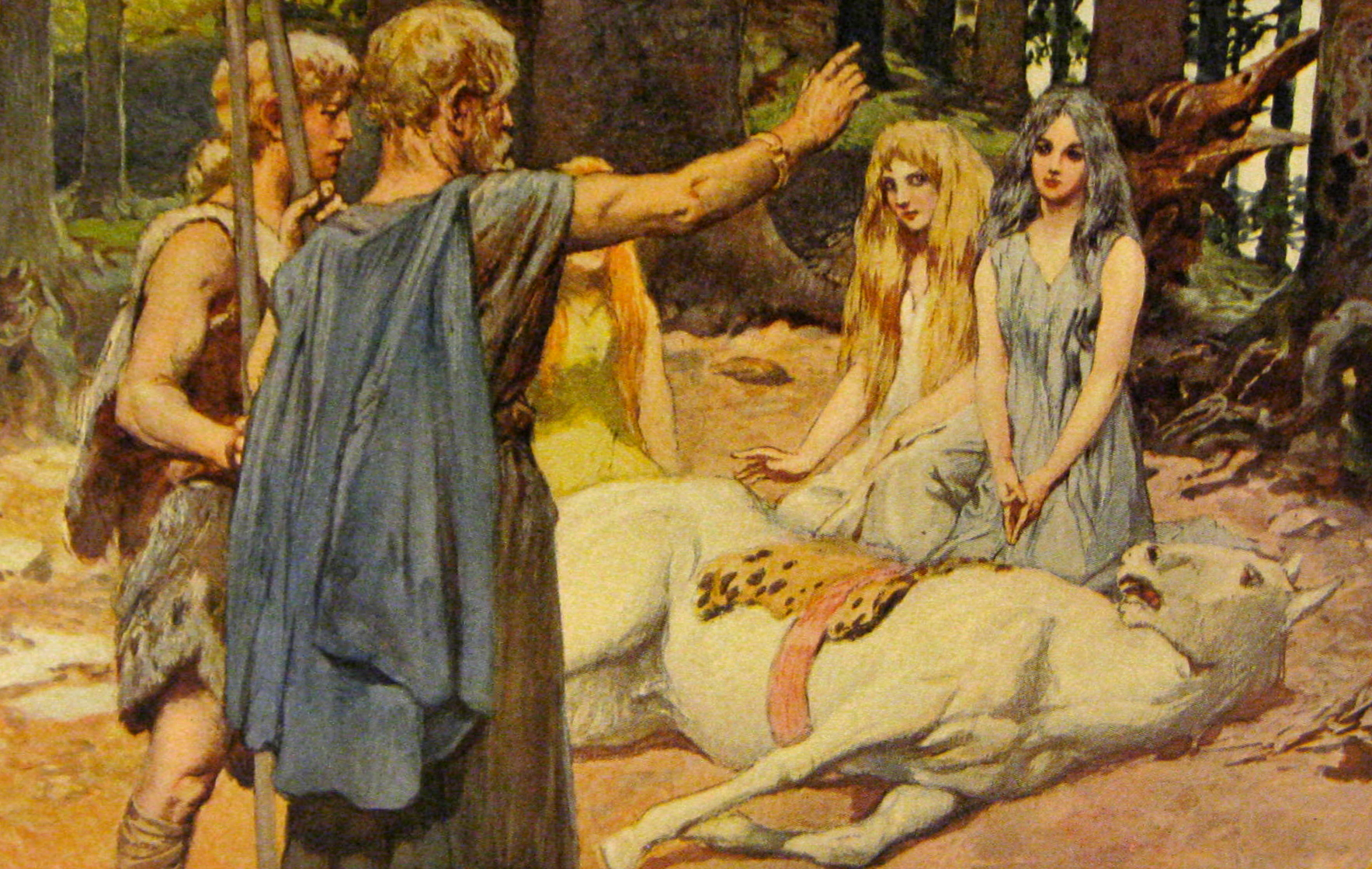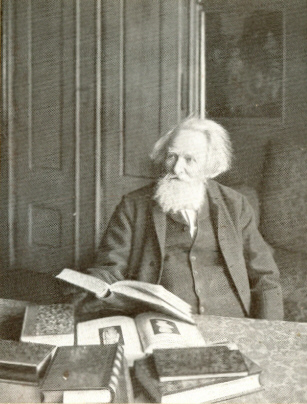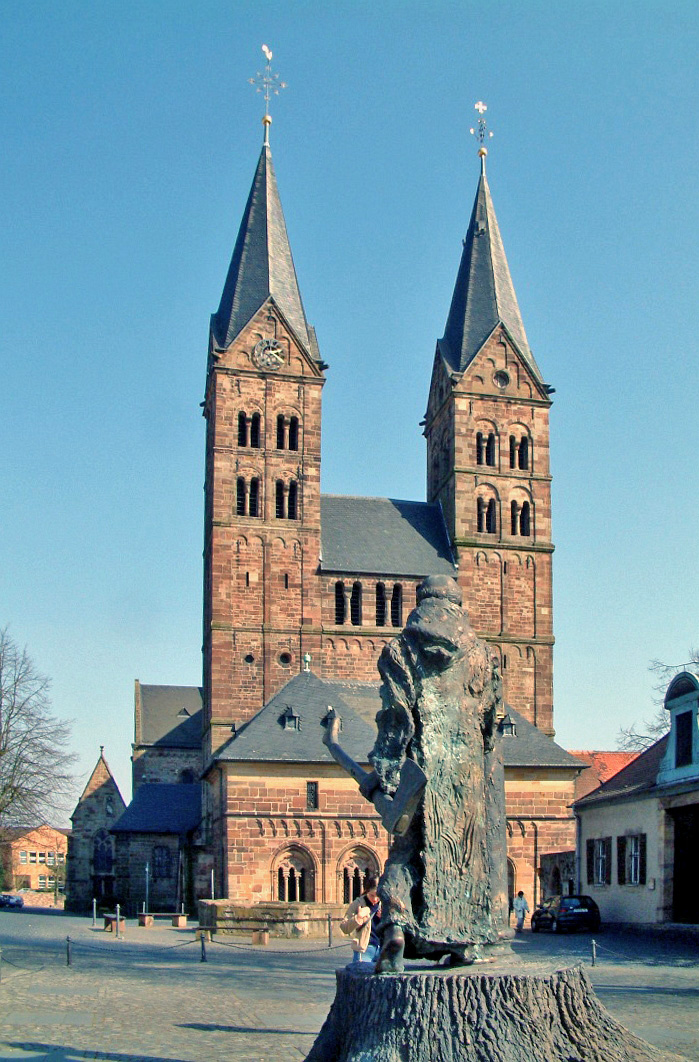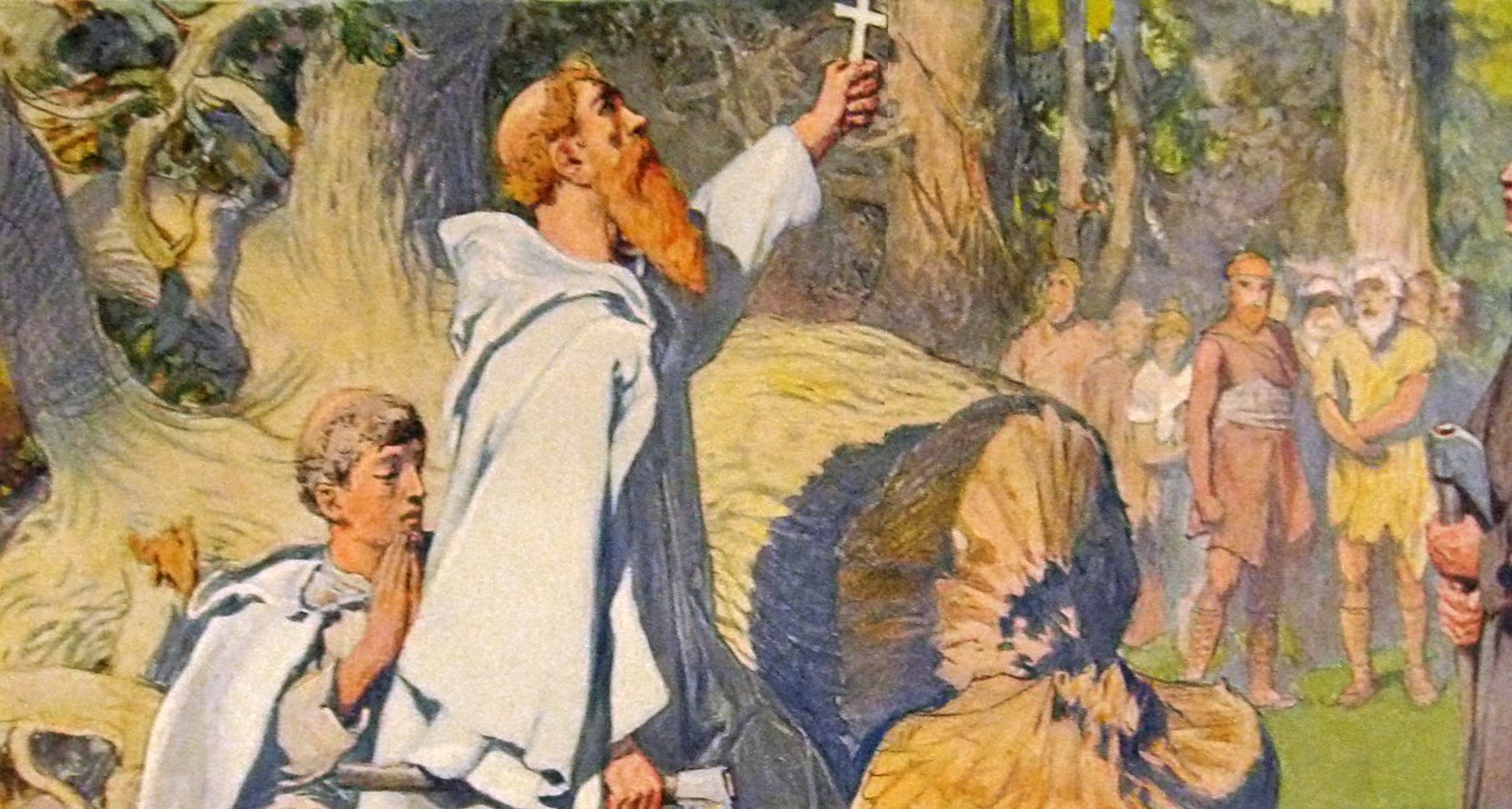|
Stuffo
Stuffo is the name of a supposed Germanic god, who originates from various late medieval legends from Germany related to Saint Boniface. Origin Stuffo first appears in a few late medieval/early modern Bonifacian legends. A 1756 image of the god being overthrown by the saint is found in the village of Küllstedt. The legend was taken up by German Romanticism in the 18th and 19th centuries, which saw in Stuffo even a legendary origin for noble families like the Stauffenbergs. Such etymologies and myths of origin are no longer accepted. Locations and backstory Two mountain-top locations have been proposed as sites of worship for Stuffo: the Staufenberg near Gießen, in Hesse; and the Stuffenberg, now Hülfensberg, in the Eichsfeld district, Thuringia. At any rate, there are over half a dozen mountains of a similar name in Hesse alone (''stouf'' meaning something like "sharp mountain peak"). The source for the latter designation comes from the 1602 ''Historia S. Bonifacii'' by J ... [...More Info...] [...Related Items...] OR: [Wikipedia] [Google] [Baidu] |
Hülfensberg
The Hülfensberg (called Stuffenberg in the Middle Ages) is a 448 m high, heavily wooded mountain in the Geismar municipality in the Eichsfeld district, Thuringia, Germany. The mountain has been a pilgrimage site since the late Middle Ages, and on its summit are a church containing a 12th-century crucifix, a Franciscan friary, a chapel dedicated to Saint Boniface, and a large free-standing cross. The medieval name for the mountain was ''Stuffenberg'', from which the supposed Germanic god Stuffo derives his name. According to some sources the name was changed in the 14th century (or around 1400) because of a famous crucifix in the church, the ''Hülfenskreuz''; another etymology for the modern name was given in 1575, based on the legend that Boniface had defeated an army of unbelievers on the mountain, which was subsequently named Hülfensberg (''helfen'': to help) in reference to divine help. Pilgrimage The Hülfensberg has been a pilgrimage site since the late Middle Ages, and ... [...More Info...] [...Related Items...] OR: [Wikipedia] [Google] [Baidu] |
Johannes Letzner
Johannes Letzner (29 November 1531 – 16 February 1613) was a Renaissance-era German Protestant priest and historian of Lower Saxony, in particular of Brunswick-Lüneburg. Letzner studied briefly at Wittenberg University in 1550–1551 before moving to Uslar as cantor and school master, and later as vicar to Parensen (1553) Langenholtensen (1564), Lüthorst (1583), Iber (1589) and finally to Strodthagen where he retired in 1610 and died three years later. Letzner's works were widely perused in 18th-century historiography of Germany, but they are now considered highly unreliable. His magnum opus was going to be a "Great Chronicle of Brunswick-Lüneburg" ("Große Braunschweig-Lüneburg-Göttingensche Chronika") in eight volumes, on which he worked during 36 years of his life. This work was never printed in full, but the fifteen works Letzner published in print during his lifetime can be seen as portions of this work. ''Conradus Fontanus'' is one of the purported s ... [...More Info...] [...Related Items...] OR: [Wikipedia] [Google] [Baidu] |
Germanic Gods
In Germanic paganism, the indigenous religion of the ancient Germanic peoples who inhabited Germanic Europe, there were a number of different gods and goddesses. Germanic deities are attested from numerous sources, including works of literature, various chronicles, runic inscriptions, personal names, place names, and other sources. This article contains a comprehensive list of Germanic deities outside the numerous Germanic Matres and Matronae inscriptions from the 1st to 5th century CE. Gods Goddesses Pseudo-deities and purported deities * Astrild, a synonym for the Roman deity Amor or Cupid invented and used by Nordic Baroque and Rococo authors * Frau Berchta, a purported deity and female equivalent of Berchtold proposed by Jacob Grimm * , a purported deity potentially stemming from a folk etymologyMeyers Großes Konversations-Lexikon, Band 2. Leipzig 1905, S. 832. * Holda, a purported deity proposed by Jacob Grimm * Jecha, a purported deity potentially stemming from a fo ... [...More Info...] [...Related Items...] OR: [Wikipedia] [Google] [Baidu] |
Thuringia
Thuringia (; german: Thüringen ), officially the Free State of Thuringia ( ), is a state of central Germany, covering , the sixth smallest of the sixteen German states. It has a population of about 2.1 million. Erfurt is the capital and largest city. Other cities are Jena, Gera and Weimar. Thuringia is bordered by Bavaria, Hesse, Lower Saxony, Saxony-Anhalt, and Saxony. It has been known as "the green heart of Germany" () from the late 19th century due to its broad, dense forest. Most of Thuringia is in the Saale drainage basin, a left-bank tributary of the Elbe. Thuringia is home to the Rennsteig, Germany's best-known hiking trail. Its winter resort of Oberhof makes it a well-equipped winter sports destination – half of Germany's 136 Winter Olympic gold medals had been won by Thuringian athletes as of 2014. Thuringia was favoured by or was the birthplace of three key intellectuals and leaders in the arts: Johann Sebastian Bach, Johann Wolfgang von Goethe, and Fried ... [...More Info...] [...Related Items...] OR: [Wikipedia] [Google] [Baidu] |
Middle High German
Middle High German (MHG; german: Mittelhochdeutsch (Mhd.)) is the term for the form of German spoken in the High Middle Ages. It is conventionally dated between 1050 and 1350, developing from Old High German and into Early New High German. High German is defined as those varieties of German which were affected by the Second Sound Shift; the Middle Low German and Middle Dutch languages spoken to the North and North West, which did not participate in this sound change, are not part of MHG. While there is no ''standard'' MHG, the prestige of the Hohenstaufen court gave rise in the late 12th century to a supra-regional literary language (') based on Swabian, an Alemannic dialect. This historical interpretation is complicated by the tendency of modern editions of MHG texts to use ''normalised'' spellings based on this variety (usually called "Classical MHG"), which make the written language appear more consistent than it actually is in the manuscripts. Scholars are uncertain as to ... [...More Info...] [...Related Items...] OR: [Wikipedia] [Google] [Baidu] |
Johann Nepomuk Sepp
Johann Nepomuk Sepp (7 August 1816 – 5 June 1909) was a German historian and politician, and a native of Bavaria. Life Johann Nepomuk Sepp was born in Bad Tölz, Bavaria, to a tanner and dyer, Josef Bernhard Sepp and his wife Maria Victoria Oefele. He studied philosophy and Catholic theology, law, philology and history in Munich, 1834–1836 and 1837–1839. In 1836, he interrupted his university studies for a trip to Switzerland and Italy, after which he entered the Gregorianum seminary in Munich. In 1839, he was awarded a Ph.D., and established himself as a private scholar in Bad Tölz. From 1844 to 1846, he taught as lecturer at the University of Munich. After he had traveled to Syria, Palestine and Egypt in 1845 and 1846, he was appointed assistant professor in Munich in 1846, but was dismissed in 1847, along with seven of his colleagues, as a result of their involvement in opposition to the elevation of Lola Montez, mistress of Ludwig I of Bavaria, to the nobility. Se ... [...More Info...] [...Related Items...] OR: [Wikipedia] [Google] [Baidu] |
Fritzlar
Fritzlar () is a small town (pop. 15,000) in the Schwalm-Eder district in northern Hesse, Germany, north of Frankfurt, with a storied history. The town has a medieval center ringed by a wall with numerous watch towers. Thirty-eight meters (125 ft) high, the "Grey Tower" ("Grauer Turm") is the highest remaining urban defense tower in Germany. The city hall, first documented in 1109, with a stone relief of St. Martin, the town's patron saint, is the oldest in Germany still in use for its original purpose. The Gothic church of the old Franciscan monastery is today the Protestant parish church, and the monastery's other buildings have been converted into a modern hospital. Many houses in the town center, notably around the market square, date from the 15th to 17th centuries and have been carefully maintained or restored. The town is dominated by the imposing Romanesque-Gothic Church of St. Peter from the 12th-14th centuries. In 1974, the town hosted the 14th ''Hessentag'' sta ... [...More Info...] [...Related Items...] OR: [Wikipedia] [Google] [Baidu] |
Donar Oak
Donar's Oak (also Thor's Oak or, via ''interpretatio graeca, interpretatio romana'', Jove's Oak) was a Sacred trees and groves in Germanic paganism and mythology, sacred tree of the Germanic pagans located in an unclear location around what is now the region of Hesse, Germany. According to the 8th century ''Vita Bonifatii auctore Willibaldi'', the Anglo-Saxon missionary Saint Boniface and his retinue cut down the tree earlier in the same century. Wood from the oak was then reportedly used to build a church at the site dedicated to Saint Peter. Sacred trees and groves in Germanic paganism and mythology, Sacred trees and sacred groves were widely venerated by the Germanic peoples. Willibald's ''Life of Saint Boniface'' According to Willibald's 8th century ''Life of Saint Boniface'', the felling of the tree occurred during Boniface's life earlier the same century at a location at the time known as ''Gaesmere'' (for details, see discussion below).Robinson 63. Although no date is prov ... [...More Info...] [...Related Items...] OR: [Wikipedia] [Google] [Baidu] |
Germanic Paganism
Germanic paganism or Germanic religion refers to the traditional, culturally significant religion of the Germanic peoples. With a chronological range of at least one thousand years in an area covering Scandinavia, the British Isles, modern Germany, and at times other parts of Europe, the beliefs and practices of Germanic paganism varied. Scholars typically assume some degree of continuity between Roman-era beliefs and those found in Norse paganism, as well as between Germanic religion and reconstructed Indo-European religion and post-conversion folklore, though the precise degree and details of this continuity are subjects of debate. Germanic religion was influenced by neighboring cultures, including that of the Celts, the Romans, and, later, by Christian religion. Very few sources exist that were written by pagan adherents themselves; instead, most were written by outsiders and can thus can present problems for reconstructing authentic Germanic beliefs and practices. Some basic ... [...More Info...] [...Related Items...] OR: [Wikipedia] [Google] [Baidu] |
Germany
Germany,, officially the Federal Republic of Germany, is a country in Central Europe. It is the second most populous country in Europe after Russia, and the most populous member state of the European Union. Germany is situated between the Baltic and North seas to the north, and the Alps to the south; it covers an area of , with a population of almost 84 million within its 16 constituent states. Germany borders Denmark to the north, Poland and the Czech Republic to the east, Austria and Switzerland to the south, and France, Luxembourg, Belgium, and the Netherlands to the west. The nation's capital and most populous city is Berlin and its financial centre is Frankfurt; the largest urban area is the Ruhr. Various Germanic tribes have inhabited the northern parts of modern Germany since classical antiquity. A region named Germania was documented before AD 100. In 962, the Kingdom of Germany formed the bulk of the Holy Roman Empire. During the 16th ce ... [...More Info...] [...Related Items...] OR: [Wikipedia] [Google] [Baidu] |







.jpg)